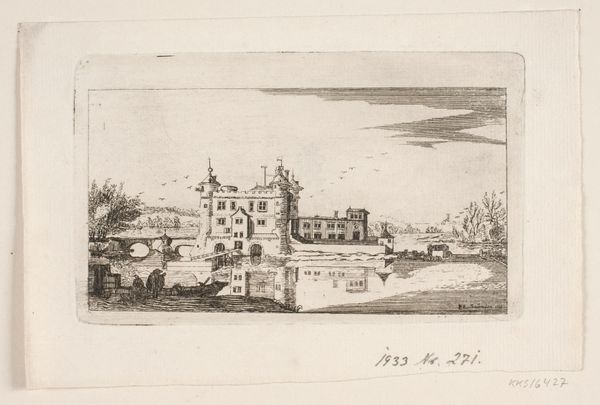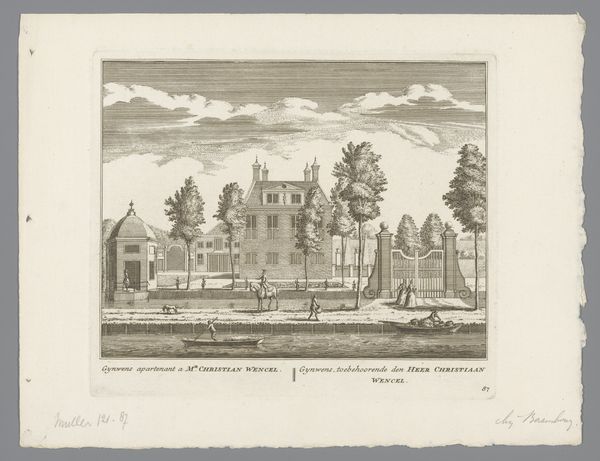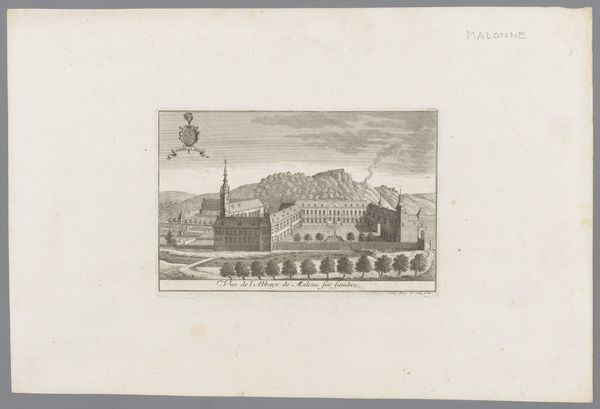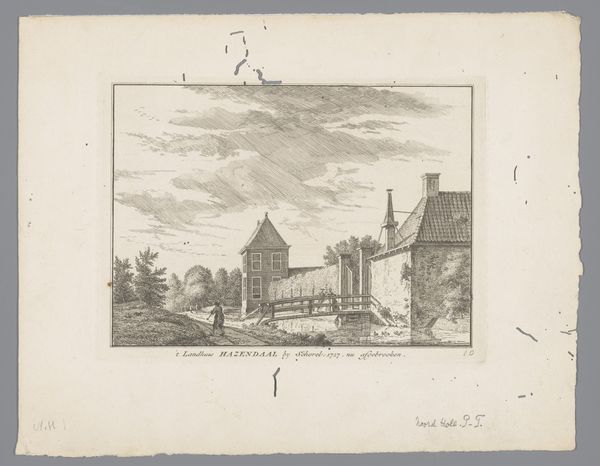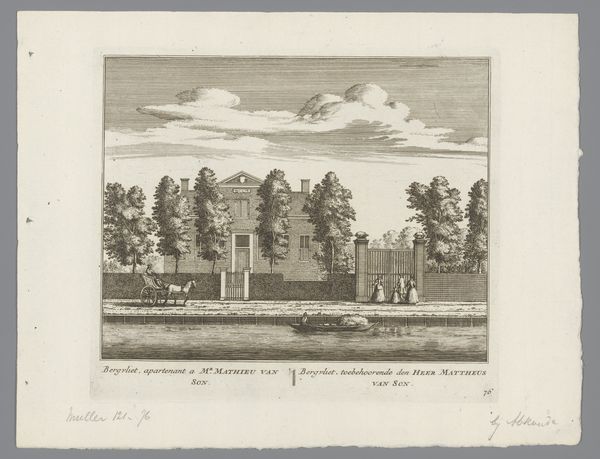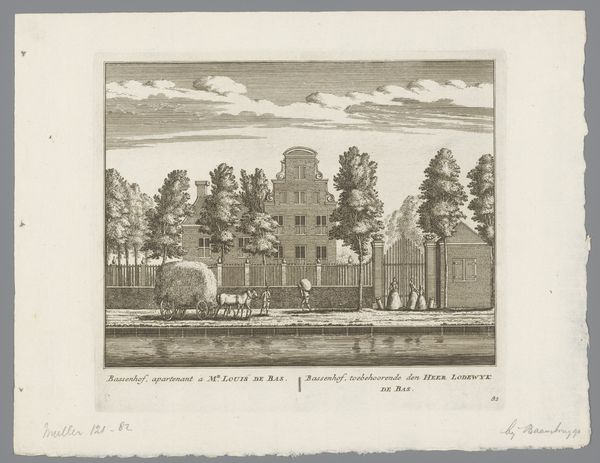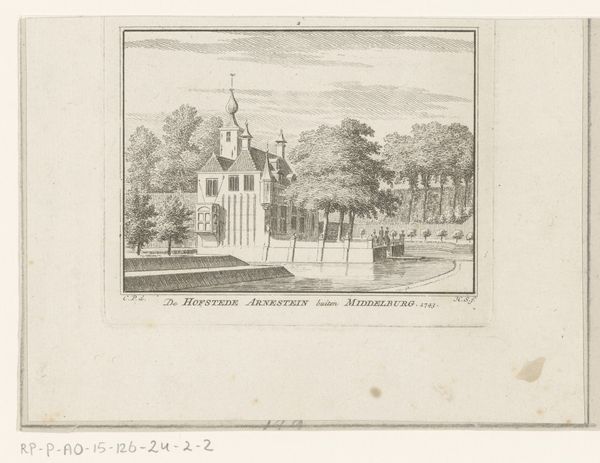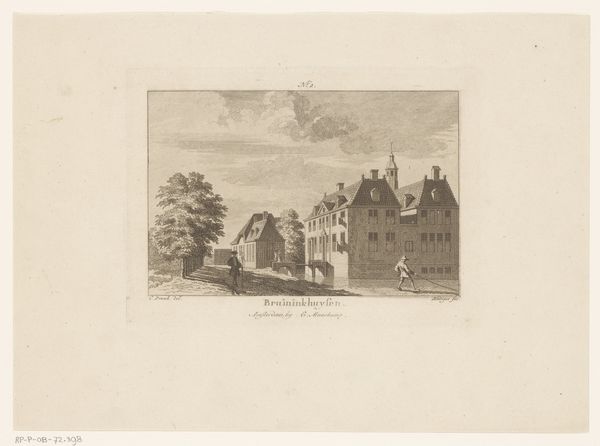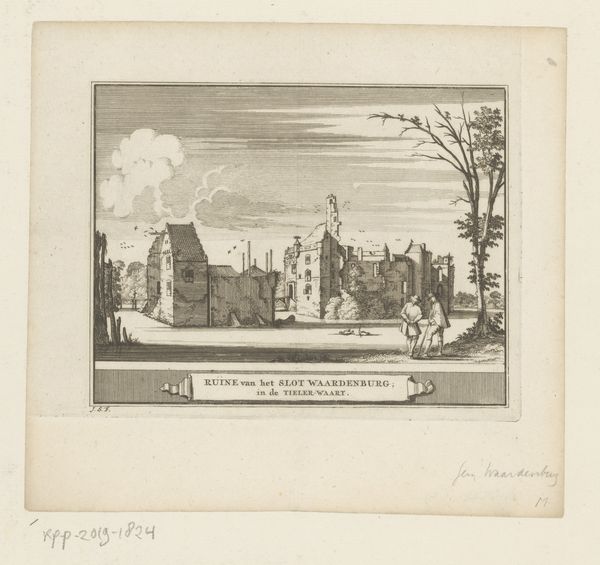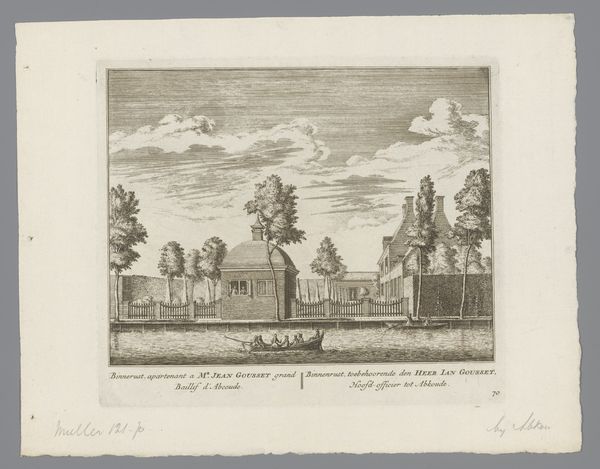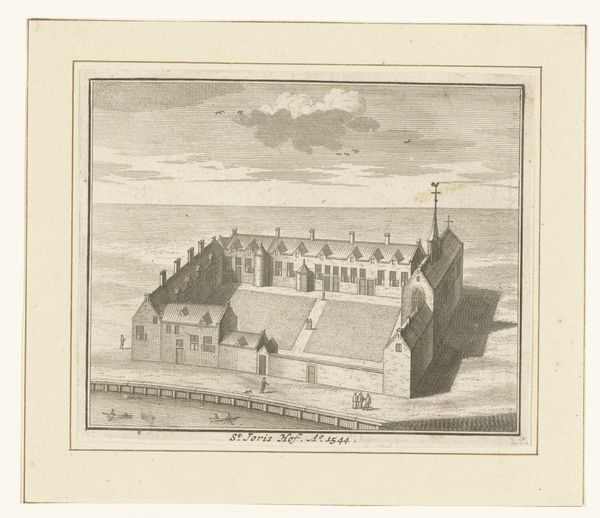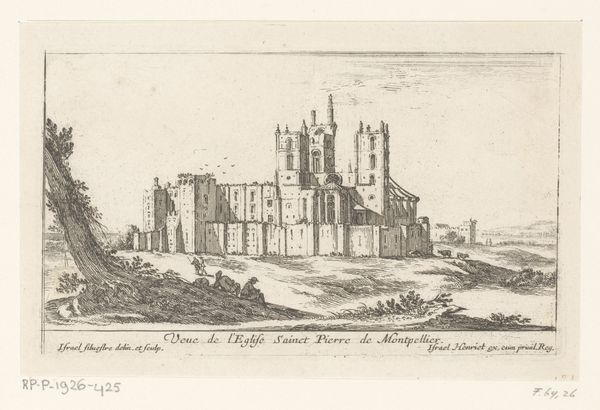
print, etching, engraving
#
dutch-golden-age
# print
#
etching
#
landscape
#
cityscape
#
engraving
#
realism
Dimensions: height 97 mm, width 107 mm
Copyright: Rijks Museum: Open Domain
Hendrik Spilman made this print of Huis 't Velde in 1743, using etching and engraving on paper. The intricate lines were achieved by coating a metal plate with wax, then drawing through it with a needle to expose the metal. Acid would then bite into these lines, allowing them to hold ink. The image’s crispness is due to the skilled hand required to incise lines with precision. Prints like these were important cultural documents in the 18th century, feeding a growing appetite for images of notable buildings and landscapes. But they also speak to the labor involved. Each print required careful work, and many impressions could be made from a single plate, creating a readily available commodity. The distribution of prints was closely tied to the rise of a market economy. Considering this, the print isn’t just a depiction of a grand house, but also a product of burgeoning commercial networks, reliant on both artistic skill and the mechanics of production. It’s a reminder that even seemingly straightforward images are embedded in broader systems of labor, exchange, and consumption.
Comments
No comments
Be the first to comment and join the conversation on the ultimate creative platform.
